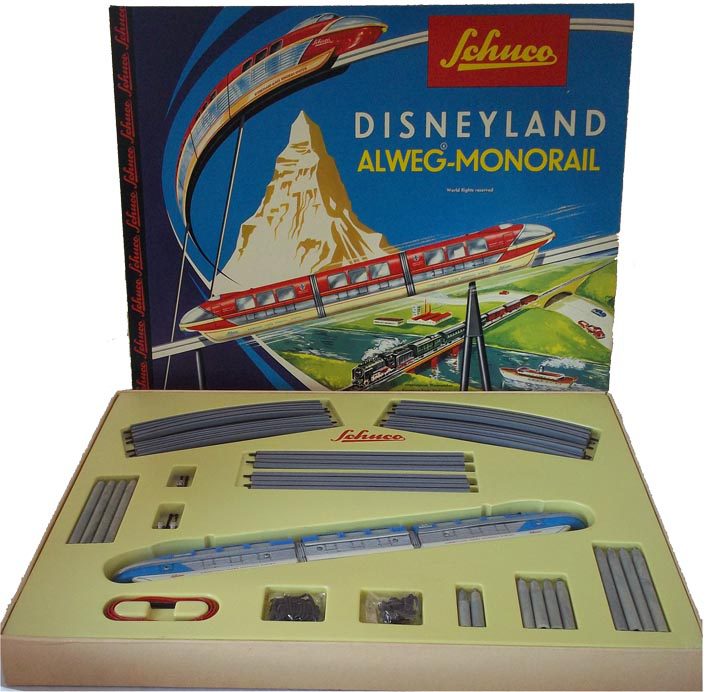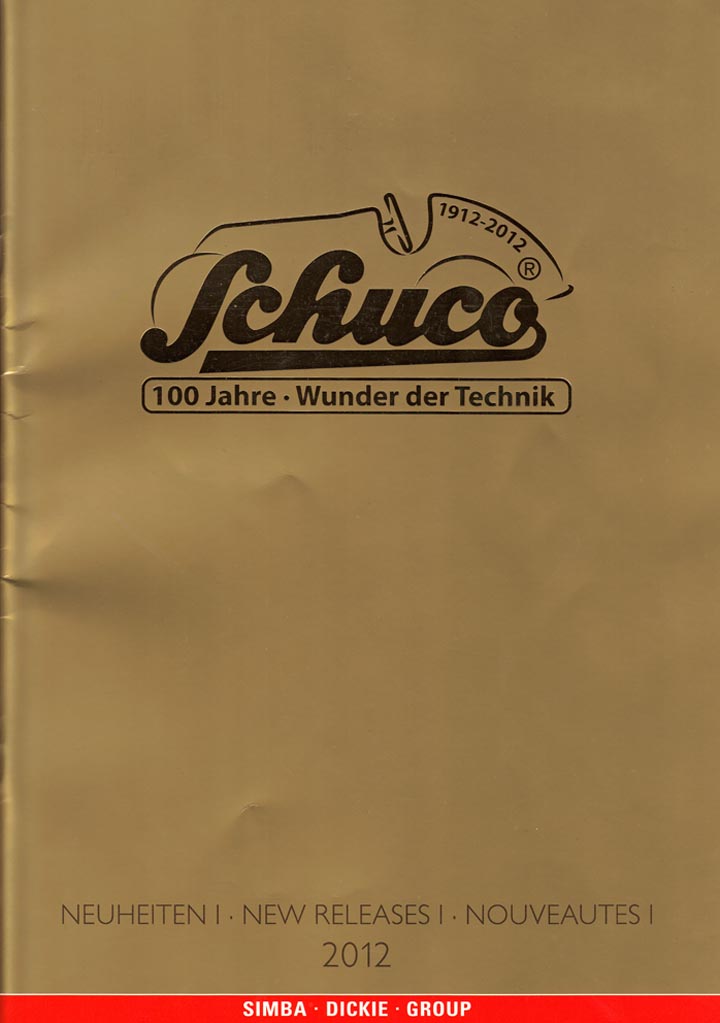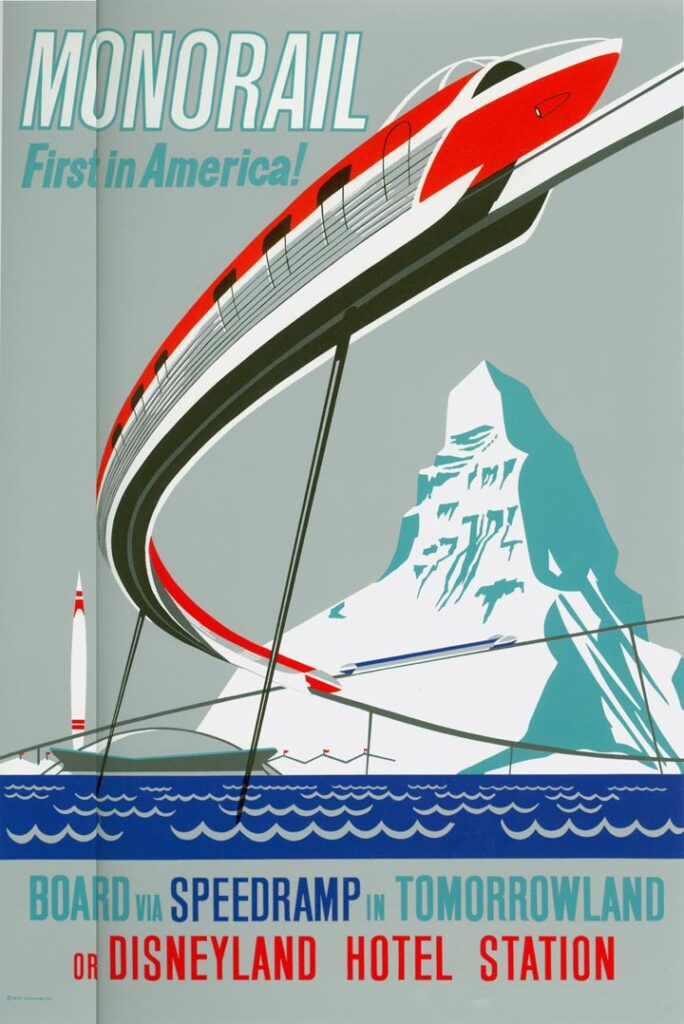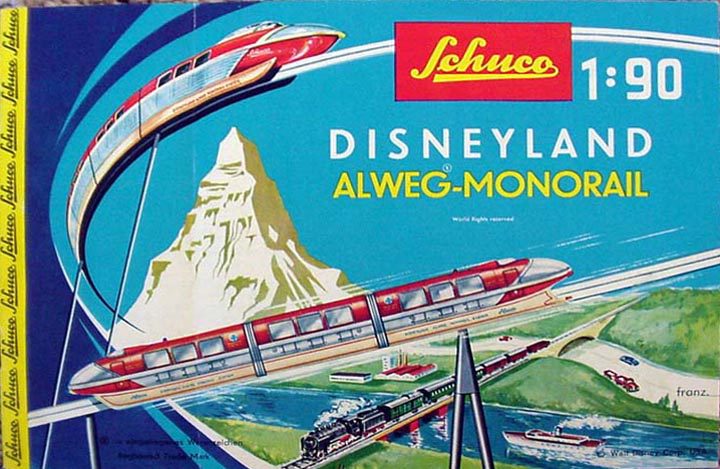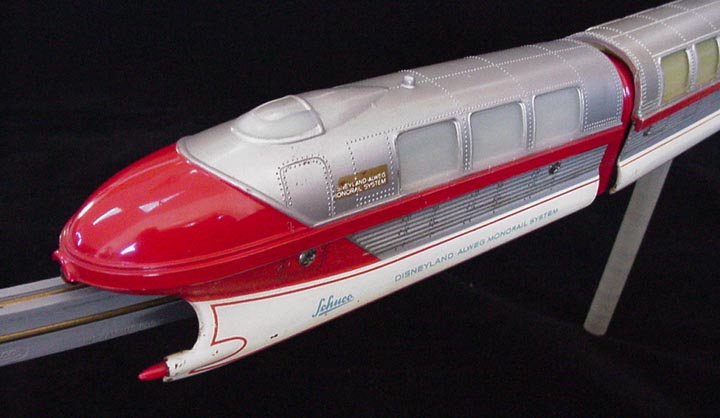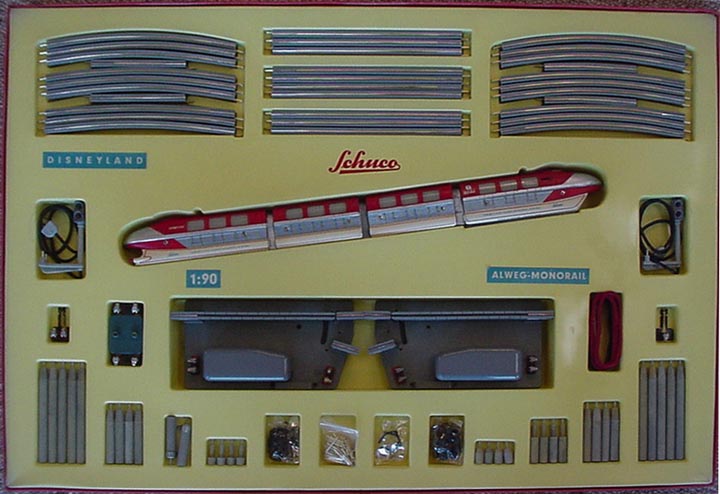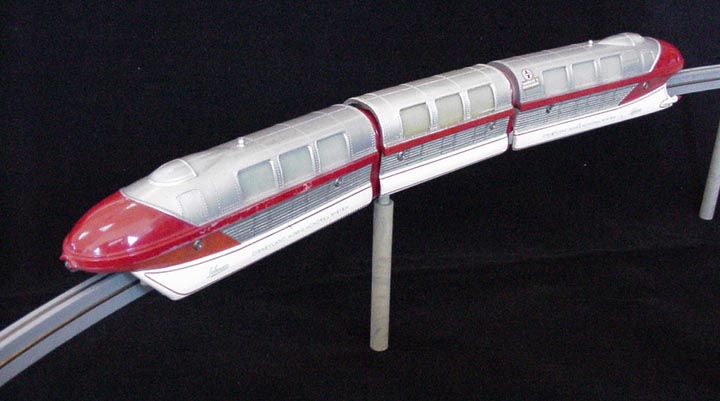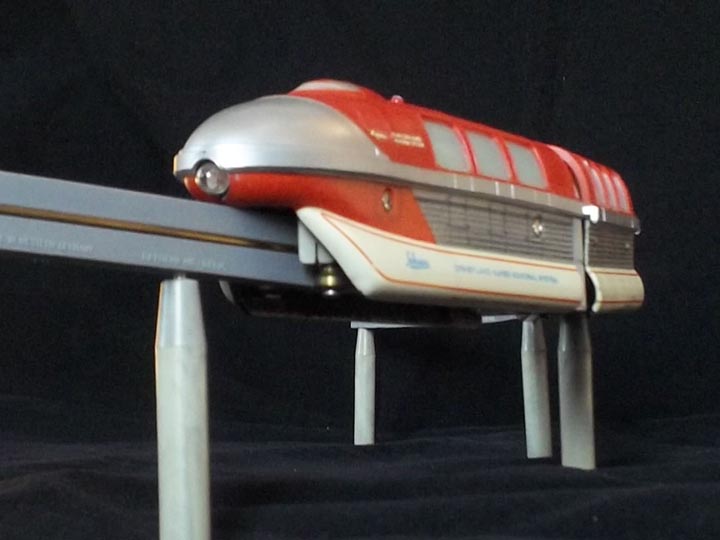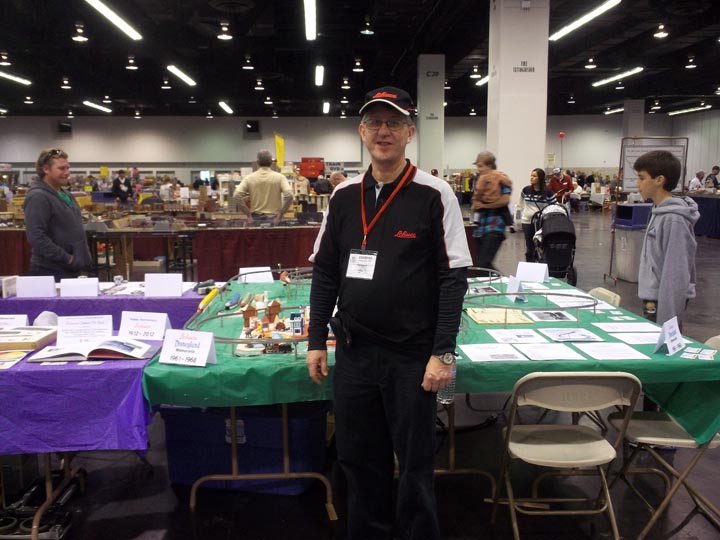The Forgotten Anniversary: Schuco and Their Classic Toy Train
By Doug Burwell TCA #81-16885
I hate missing people’s birthdays. It is embarrassing to forget that special day of an old friend, employee, or acquaintance. What is even worse is forgetting one’s anniversary! Yet, probably most of us missed a milestone anniversary in 2012. Schuco celebrated 100 years of being in business! Only 7% of the world’s businesses make it to this milestone.
Many of us have probably heard of the German toy company, and some of us more than likely played with their wind up Micro-Racers in our youth, but few of us realize that Schuco also modeled a train after the actual one that still operates in a classic American icon: Disneyland! There are not many places that represent American ingenuity, imagination, capitalism, and values all in one spot. In 1959, even Soviet Premier Nikita Khrushchev recognized this! He wanted to go to Disneyland, but was denied because of security reasons. That denial almost escalated the Cold War!
Also in 1959, Walt Disney showcased what he believed would be part of the future of transportation, the Disneyland Alweg monorail. This electrified sleek train ran on a cement beam above all buildings, roadways, and sidewalks.
Like Walt Disney, Schuco was also known for its innovation. Schuco is an acronym named after the financial backer, Heinrich Schreyer and Company: SC from SChreyer, UN from the German word “UNd” or “and” in English, and CO from “COmpany.” Many of its products contained that “Aha” factor when one played with them. You could steer a model car, shift its transmission, and even play the radio. All this with no batteries, just a key to wind up the mechanisms. In 1958, Schuco’s imaginative genius and founder, Heinrich Müller, died, allowing Alexander Girz to step up to the plate. He had visited and ridden the Disneyland Alweg monorail, and believed this would be his chance to contribute to the Schuco product lineup.
Girz began the licensing agreements with Disney, and then the development of the model train itself. Schuco’s model monorail would be transformer driven using DC voltage. Since the Disneyland Alweg (which is also an acronym of the inventor’s name, AxeL WEnner-Gren) monorail was unique at the time, all of the model’s parts including track, switches, and pylons had to be designed from scratch. Overall there were around 50 accessories to accompany the monorails, not to mention all the parts needed to build the monorail and the accessories themselves.
From the beginning there were some arguments in the design of the toy train. The Schuco designers wanted the monorail to be in the popular 1:87 HO scale, but Girz insisted on 1:90 scale to match the Schuco Piccolo automobile series they were currently producing. This series was one of the competitors of MatchBox cars. In the long run, Schuco spent over $250,000 Deutsche Marks just in the design and development of the monorail series. The first set, the 6333/G, was introduced around October of 1961.
The 6333/G or “Gift” set contained a three unit Disneyland Alweg Mark I monorail, 16 pieces of track, a variety of pylons, and several tiny pieces to complete a small oval or square layout. The monorails were offered at hobby shops throughout the world, not just at Disneyland. The first set was believed to be priced at $39.95, a hefty price for a toy train in 1961. At that time, a person could gain admission to Disneyland for just $3.50 or purchase admission AND a ten ticket book for only $4.75. Imagine wanting a $40 Schuco monorail while visiting Disneyland! On top of that, the set did not even include a transformer as did none of the future Schuco Disneyland monorail sets.
Though at the beginning Schuco claimed fantastic sales of the 6333/G set, during the Nuremberg toy fair around March of 1962 they introduced a change in the set. It would now only contain 12 pieces of track, eight pylons, and fewer parts. Positives to the set changes were that the Mark I monorail now had more weight and tail fins were installed on the rear car. The addition of the tail fins is said to be requested by Walt Disney himself; however, after discussing this possibility with Bob Gurr, the original imagineer of the actual Mark I, Walt probably did not involve himself with the production of the Schuco model. Other changes were that the tracks in the set now contained brass rails instead of steel. The bottom line was that the set was now priced at $29.95 and became available to consumers during the Fall of 1962. It still retained the name, “Gift” set and number 6333/G.
In 1962, two other sets were offered by Schuco. The largest, the 6333/S set; and a set aimed specifically for the North American market. Today this set is referred to as the “H” or “American” set, though Schuco never named or numbered the set. The 6333/S set included switches, block signals, a figure eight of track, and a four unit monorail. In 1961 Disneyland added a middle car to the Mark I and called it a Mark II, so now Schuco was updating also. This was the only set Schuco offered that contained the Mark II, but one could purchase an extra middle car with bolster as an extra accessory at the local hobby shop and create his or her own Mark II. This middle piece with the wheeled bolster is one of the hardest and most expensive accessories to find today.
The cost of making a quality toy took its toll. Schuco continually lowered the prices of their sets, but could only do so to a point and still maintain a profit. Books written about Schuco’s history state that the company gave up on the monorail in 1969, but the last listing of it that I can find in a Schuco catalog or a toy catalog is 1967. Schuco workers blamed the choice of the 1:90 scale as its downfall, but there were several other factors involved, including the price, and that interest in toy trains in the 1960’s was dwindling. Another reason is that the average original Schuco Disneyland monorail owner probably never appreciated the quality and ingenuity put into the monorail series. The motors in the monorail and switches seldom fail. An operator can run two monorails on one track, yet retain control of each individual monorail. Switches, which were ingenious in themselves, could be used to create block systems in a layout so that one monorail would never collide with another. The monorails could actually control the switches, thus creating various paths for each monorail to take on a layout.
The design of the Schuco Disneyland monorail system is incredible. As I travel throughout the country displaying actual operating layouts, I am always asked if I have a laptop or computer operating the monorails. This is a testament to the German engineering of a classic toy train made in the 1960’s, way before anyone owned a personal computer! A testament to the quality is the fact that most of the monorails I find today, no matter what their condition, still operate. I also run these 50 year old toy trains nonstop at various shows for several hours.
So what happened to the Schuco company since its founder, Heinrich Müller started it in 1912? After his death, the company seemed to have lost its spirit. The failure of the Schuco Disneyland monorail among many other sales failures and financial burdens were finally too much for what was once one of the largest toy companies in Europe. Schuco went bankrupt in 1976 and has been acquired by several other industries throughout the years. Today they are owned by the Simba-Dickie-Group located in Nuremberg, Germany. Several of the old wind up toys made years ago are being reproduced under the Schuco name. Schuco did celebrate its 100th anniversary last year. In celebration, I purchased a catalog, a special USB storage unit shaped like one of the old Micro-Racers, a shirt, and a matching hat. However, most collectors of toys and trains probably missed the event, but hey, there is no reason not to celebrate today. Happy 101 Schuco!
Author’s note: I try to document my findings on the Schuco Disneyland monorail. I can find several catalogs and brochures on the monorail. Many are in German. I have tried to track the prices of the sets throughout the years. I can verify the prices of the second generation “Gift” set and the “American” set. However, if any readers could verify prices of the first generation “Gift” set and the 6333/S set, the information would be most appreciated by me and by all the Schuco Disneyland monorail collectors around the world. Please visit my website at: www.SchucoDisneylandMonorail.com

